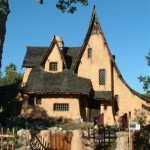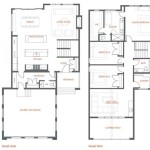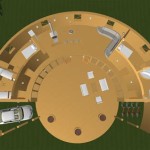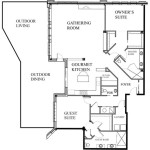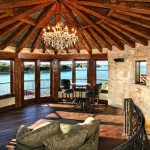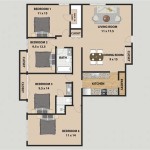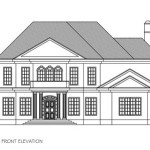Greco Roman House Plans: A Journey Through History and Design
Introduction:
Step through the threshold of history as we explore the captivating world of Greco Roman house plans. These architectural masterpieces, rooted in ancient Greece and Rome, offer a glimpse into the lives, culture, and aesthetics of civilizations that shaped our world. Join us on a journey to uncover the secrets of these magnificent structures, from their grandeur to their intricate details.1. Origins and Influences:
The origins of Greco Roman house plans can be traced back to the 7th century BC in Greece. Influenced by Minoan and Mycenaean architecture, these structures evolved over centuries, reflecting the political, social, and economic changes of the Hellenic and Roman periods. The central courtyard, known as the atrium, served as the heart of the household, while rooms arranged around it fulfilled various functions.2. Key Features:
Greco Roman house plans are characterized by several distinctive features that set them apart from other architectural styles: -Atrium:
The atrium was a central courtyard, often with an opening in the roof to let in light and rain. It served as a focal point for the house and a gathering place for family and guests. -Peristyle:
The peristyle was a covered walkway or colonnade surrounding the atrium. It provided shade and circulation space and added to the overall beauty of the house. -Tablinum:
The tablinum was a formal reception room or study, often located at the back of the atrium. It was used for business transactions and entertaining guests. -Cubicula:
Cubicula were bedrooms, typically arranged around the atrium or peristyle. They were often small and simple, with few furnishings. -Culinary Area:
The culinary area, or kitchen, was usually located at the back of the house. It was equipped with a hearth, oven, and storage space for food and utensils.3. Design Elements:
Greco Roman house plans incorporated various design elements that contributed to their aesthetic appeal and functionality: -Columns:
Columns were extensively used to support the roof and create a sense of grandeur. They were often made of stone or marble and featured intricate carvings. -Mosaics:
Mosaic floors were a common feature in Greco Roman houses. These intricate designs added color and texture to the interior spaces. -Frescoes:
Wall frescoes depicting scenes from mythology, history, or everyday life were popular decorative elements. They brought life and vibrancy to the rooms. -Gardens:
Gardens played a significant role in Greco Roman architecture. They were often located at the back of the house and provided a serene retreat for relaxation and contemplation.4. Regional Variations:
While Greco Roman house plans shared common features, regional variations existed due to climatic, cultural, and social factors: -Greek Houses:
Greek houses were typically smaller and simpler in design compared to Roman houses. They often lacked an atrium and peristyle due to the warmer climate. -Roman Houses:
Roman houses were more elaborate and luxurious, reflecting the wealth and power of the empire. They often featured larger atriums, peristyles, and lavish decorations. -Villas:
Villas were large country estates owned by wealthy Romans. They often had multiple wings, gardens, baths, and recreational facilities, resembling palaces in their grandeur.5. Legacy and Influence:
The legacy of Greco Roman house plans extends far beyond the ancient world. These architectural principles and design elements have influenced subsequent architectural styles, including Renaissance, Baroque, and Neoclassical. The classical orders, proportions, and emphasis on symmetry and beauty continue to inspire architects and designers to this day.Conclusion:
Greco Roman house plans stand as testaments to the architectural ingenuity and artistry of ancient civilizations. Their enduring influence on architecture speaks volumes about their timeless elegance and functionality. As we delve into the details of these structures, we gain a profound appreciation for the craftsmanship and creativity that shaped the homes and lives of people centuries ago. From the grandeur of the atrium to the intricate mosaics, Greco Roman house plans continue to captivate and inspire, inviting us on a journey through history, culture, and design.
5th Century Bc Classical Age Greek House Plan With Separate Quarters For Male And Female Ancient Architecture Roman

A N Ilration Of The Layout An Average Ancient Roman Villa Wealthier Class This Eould Ne My D House Houses Architecture

The Evolution Of House Part 4

Floor Plan Of The Classic Roman House With Names Each Room Bath Ancient Houses
How Many Floors Did A Typical Early Roman House Have Quora

Ancient Greek House Plan Athens Roman Houses Greece

Floor Plan Of A Greek And Roman House Fig 145 Normal Stock Photo Picture Rights Managed Image Pic Aqt Lc190917 082472 Agefotostock

Paradigm Shift In Architecture Greek Roman Early

Greek Revival House Plans Modern Historic Floor

Greek Revival House Plans Modern Historic Floor

